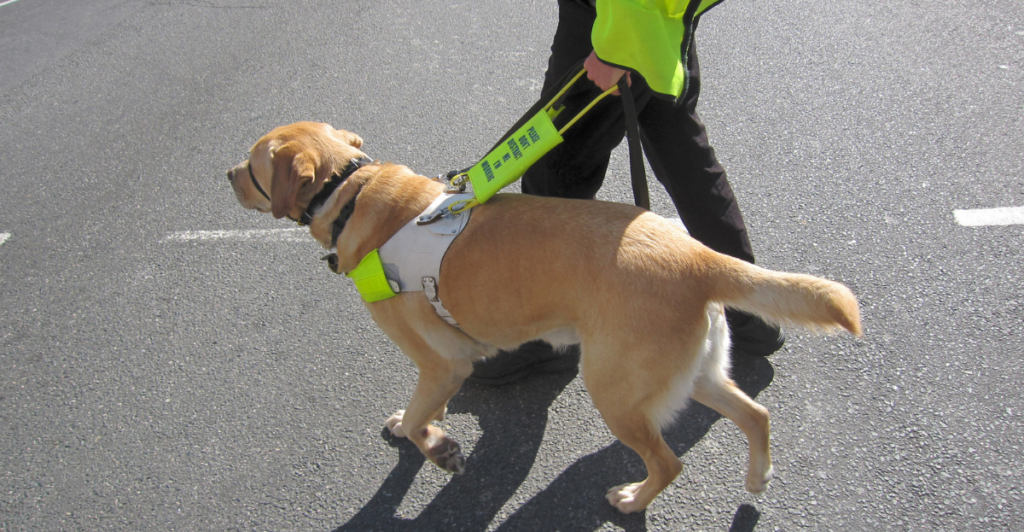
Dogs, being as popular as they are, are probably stereotyped more than any other animal. These stereotypes often manifest in anything from social media memes to cartoons.
While many dog stereotypes may be completely overblown or completely wrong, there are some that are surprisingly true to a dog’s nature. Let’s delve into the world of stereotypes and talk about the ones that hold up to scrutiny.
From dogs’ amazing ability to sense human emotions to their genetic roots and how they can mirror their owner’s personality, there are a lot of stereotypes to talk about, so let’s get started.
Reading Human Emotions

A common stereotype is that dogs read human emotions well and can often feel like “mind readers.” This is actually quite accurate to real life. Unlike many other species, domesticated dogs have evolved alongside us for so long that they can interpret exactly how we’re feeling by following a few social cues.
These cues include facial expressions, tone of voice, and more subtle changes in our mood. Research suggests that dogs can accurately interpret happy, sad, and angry facial expressions.
This is partly why some breeds are such fantastic companions and even therapy animals. They aren’t mind readers. They just know you better than you’d think.
Some Breeds Are Aggressive

The notion that certain dog breeds have a predisposition to being more aggressive than others has some truth to it, but in reality, it is quite nuanced. Genetics can play a role in temperament, such as a certain lineage of dog facilitating more aggression or protectiveness.
However, a much greater factor in a dog’s temperament is their environment, upbringing, training, and socialization. These are important factors that play a huge role in what kind of personality your dog has. While breed tendencies do exist, they are not set in stone.
There are cases of dogs being bred solely for temperament, which shows that genetics can influence their behavior, but this stereotype is an oversimplification.
Adopting Their Owner’s Behaviors

There’s a stereotype that dogs adopt their owner’s emotional state and behaviors. Ever seen an anxious owner have an equally anxious dog? This is a phenomenon backed by scientific study.
Dogs are very sensitive to their owner’s emotional states and these moods can transfer onto them. Dogs can develop stress, anxiety, or calmness through their owner’s day-to-day behaviors and cues.
Remember that your mood can have a huge impact on your canine, and it can even shape your well-being for the rest of your life. Try to be mindful of how you portray your feelings around them, especially if your dog is already quite sensitive.
Dogs Are Born Obedient

Many believe the notion that some dog breeds are naturally obedient compared to others, and it may be true that certain breeds are easier to train and can be more obedient if taught; it is not a trait they are born with.
Dogs need clear and consistent training to understand how their dynamic with their humans works through repetition, rewards, and good communication.
If a dog is misbehaving, it is generally because they don’t understand that it’s something their owner doesn’t want them to do. They are still animals and need to be taught right actions from wrong ones when they are young.
Having A “Sixth Sense”

There are stories circulating of dogs being able to predict when their owners are going to be in danger before it happens. The most common example of this “sixth sense” is when dogs can feel that their owner is going to have a seizure or even develop undiagnosed cancer.
These sound like urban myths, but they are backed by science. Dogs can sense subtle changes in their owner’s scent or behavior that signal illness or stress.
Medical alert dogs are trained to unleash this potential, leading them to warn owners of impending health crises.
Communicating Through Body Language

There’s a stereotype that dogs communicate with their owners through their tails, ears, and posture.
While humans can communicate their needs easily through speech, dogs rely on a complex system of body language to tell their owners everything from excitement to aggression.
When humans misinterpret this body language, it can lead to dog-human conflict, including nips, bites, or other behavioral issues. Learning what a dog’s body language means is important for safe and happy interactions with canines.
Loving Routine

Many people believe that dogs rely on routine to stay stimulated and happy, and this is completely true. Dogs are habitual by nature and are comforted by routines and schedules that they have learned through reinforcement.
Walking and feeding your dog at a certain time makes them very happy, and straying off of these things can often lead to disappointment, anxiety, or misbehaving, especially in high-strung breeds.
They have a long lineage as pack animals and thrive off of a routine that was once crucial for their survival. Keep your dog happy by keeping on course and not switching things up too much.
Food Motivated

There’s a stereotype that dogs are food-obsessed, and this is quite true, but it’s a little more complicated than just them begging for table scraps.
Food motivation can be a great way of training your dog because it caters to their natural survival instincts and teaches them reward systems. Dogs see food as a social currency, and if they try to share their meal, work for treats, or refuse food, this can indicate that they trust you, feel uncomfortable, or are in distress.
Remember that your dog’s appetite can be a huge indicator of underlying problems or just how they feel about you.
Holding Grudges

A strong survival tool for dogs is linking memories with events, people, or places. They don’t easily forget a negative experience and associate it with whoever was responsible or where it happened.
They can link positive emotions to these things as well, meaning they might love getting in the car because they know it means they’re going to a beloved family member.
Remember that when it comes to first impressions, dogs never forget. This stereotype is a cautionary tale for responsible ownership.
Explore more of our trending stories and hit Follow to keep them coming to your feed!

Don’t miss out on more stories like this! Hit the Follow button at the top of this article to stay updated with the latest news. Share your thoughts in the comments—we’d love to hear from you!







